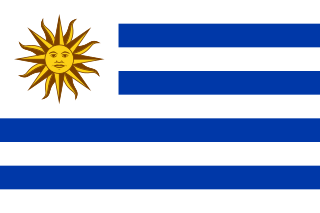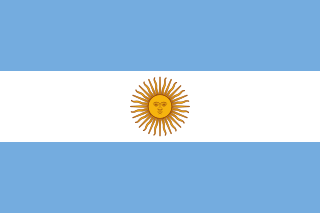In 1916, Argentina organised the first South American Championship of football (known as Copa América since 1975) to celebrate the centenary of its independence from the Spain (July 9, 1816). The Argentines invite the Brazil, the Chile and Uruguay to participate in the competition. All matches of the South American football Championship held in the estadio Gimnasia y Esgrima of Buenos Aires, but the incident during the final between the Argentina and the Uruguay forced the organizers of the tournament to relocate the last match of the competition in the estadio Racing Club of Avellaneda.
During competition and face the popular craze generated by meetings, Héctor Rivadavia Gómez, member of the Uruguayan football federation, proposed the creation of a South American Confederation of Argentine, Brazilian, Chilean and Uruguayan football federations. And the day of the anniversary of the centenary of the independence of the Argentina, on 9 July 1917, CONMEBOL (South American football Confederation) is based and includes the four federations of the Argentina, the Brazil, the Chile and the Uruguay.
The first South American football championship 1916 became the first official competition recognized by CONMEBOL.
In the rules of football in 1916, no replacement players is expected during a match, and the referee does not yet of yellow and red cards.
The four selections participating in the competition vie for victory in a single group, each team meeting in turn to determine the winner of the tournament.
On July 2, 1916, the South American Championship begins.
In the estadio Gimnasia y Esgrima, 3,000 spectators made the trip to attend the first match of the tournament, Uruguay against the Chile. In the eleven Uruguayan, Isabelino Gradin, player of Peñarol, and Juan Delgado, footballer who plays for Central Español Fútbol Club, attract the attention of Chilean opponents because of their skin color. Indeed, it is the first time in history that a country sends two black players to participate in an official competition, and Chileans complain fervently to see the Uruguay "use" for "African" players in his team. But the Argentine referee Hugo Gronda did precisely not take into account and gives the kickoff of the encounter. Just before the half, José Piendibene (44th minute) opens the score for la Celeste. 1-0 for the Uruguay, the men of Carlos Fanta chasing the score, and in the 55th minute, this is the moment chosen by Isabelino Gradin to mark its footprint the game bearing the mark to 2-0. 15 minutes later, Gradin marks the first double in the history of the South American Championship of football, until his teammate José Piendibene only imitates it five minutes more later. Final 4-0 score, la Roja continues to complain for the same reason as early in the match, but the Uruguay won the first game in the history of the competition field.
Four days later, the Chile can still believe in his chances to win the first South American Championship of football, but it should beat the Argentina and 18,000 spectators of the estadio Gimnasia y Esgrima. But above all Alberto Ohaco, the scorer of the Racing Club de Avellaneda, does two minutes to find the net, 1-0 for the Albiceleste. The match can very quickly turn to the demonstration, but nothing more happens when Telesforo Baez equalizes at the 44th minute. The Brazilian referee whistles the half with the score of 1-1. The return of the locker room, the argentine machine place so, Juan Domingo Brown converts two penalties (60th and 62nd), Alberto Andrés Marcovecchio sign the fourth goal for Argentina (67th), then Alberto Ohaco is in his double seven minutes later before that Marcovecchio finished the Argentine recital at the 81st minute. Score final 6-1, the Albiceleste hits a great shot on his land and the Chile was not able to.
July 8, is the introduction of the Brazil, confronted with this same team of the Chile. Demosthenes opens the score for the Seleção at the 29th minute, and la Roja does not want to leave this first tournament with zero point, Hernando Salazar equalizing five minutes before the end of the match. 1-1 final score.
Two days later, the Brazilians are opposed to the Argentina. José Laguna, player of Huracán, marks the first goal of the match at the 10th. Thirteen minutes later, Manoel Alencar do Monte challenges the Brazil in the match, and time flies, the referee whistling the end of normal time on the final score of 1-1. The Albiceleste loses a point in his duel with Uruguay for the final victory, and the Brazil followed a second match nul consecutive.
On 12 July, the Uruguay faces the Brazil, and the Seleção must win to take the two points and still hope in the competition. And the striker of Club Athletico Paulistano Arthur Friedenreich opened the score at the 8th minute for Brazilians. The turn of events looks favourable, and the Brazil believes more and more, but the 16th minute is fatal to Brazilian defender Orlando, which must leave its partners due to injury. Unable to perform a replacement, the head coach of the Brazil Sylvio Lagreca can only encourage his men, now outnumbered for the last hour of play. And the second period of the game changes its physiognomy, Isabelino Gradin marks his third goal of the tournament at the 58th, before that José Tognola gives the victory to the Celeste at the 77th. Final score 2-1 to Uruguay, who earns two points and finds himself alone at the top of the group.
On 16 July, the estadio Gimnasia y Esgrima hosts the final of the first South American Championship of football between the Argentina and Uruguay. But the event is stopped in the 5th minute, spectators in the grandstands starting to fight among themselves. Case degenerates and spectators invade the field and stadium catches fire because built in wood. The match was postponed to the next day, and will take place in the estadio Racing Club of Avellaneda.
The next day so Argentines and Uruguayans gather to know who will win the first South American football championship. The Celeste needs a match to be declared winner, the Argentina must overcome to win the tournament on its land. 17,000 spectators were in the stands, the Chilean referee gives the outbox, but despite opportunities on each side, the score of the match does not move, 0-0 at the end of regulation time, and Uruguay of Alfredo Foglino won the first South American Championship of football.
With 3 goals scored during the competition, the Uruguayan player of Peñarol Isabelino Gradin was topscorer of the tournament.



